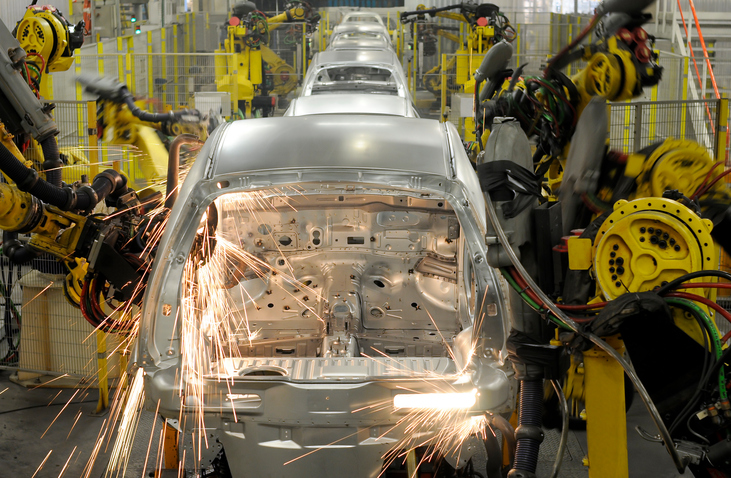How Robotic Welding Improves Efficiency Over Manual Welding Processes

Robotic welding has gained tremendous popularity over the past few decades. Led by the automotive industry, robotic welding has quickly become the standard in many factories across the world. There’s a reason for this – robotic welding work cells provide significant advantages over manual processes.
Manual welding processes still have their place, mainly for welding of large, low-volume parts that require complicated welding. Robots are more suited for high-volume environments where consistency and speed are valued above all else. However, some robotic welding work cells are starting to tackle large, complicated parts with good return on investment (ROI) and throughput levels.
There are several ways robotic welding improves efficiency, but the main two are uptime and reduced costs.
Robotic Welding Uptime
For manual welding processes, welders have to take breaks. They have to stop to readjust and get a better look at the part. They also only work in 8 hour shifts and go home every night to sleep. This is entirely understandable and acceptable, but it’s hard to compete with the uptime of robots.
Robotic welding cells don’t need to take any breaks other than occasional maintenance and can work around the clock without stopping. With preventative maintenance measures, some robotic systems can achieve uptime levels above 90%. This big of an improvement in uptime yields drastic changes in throughput and productivity.
Robotic Welding Costs
At the same time that robots are improving throughput and productivity, they’re also lowering the costs of production. After several decades of deployment, manufacturers can have confidence that robotic welding will deliver ROI in a reasonable timeframe.
Once ROI goals are achieved, there’s no more investment of resources outside of maintenance and occasional training for technicians. It doesn’t take long for labor savings to pay for robotic welding investments, and further savings are accrued over the lifetime of the systems.
The costs of robotic welding make it an appealing option for manufacturers. When you combine the cost savings with the improved uptime and throughput, the result is significantly higher efficiency in welding processes.
To learn more about the benefits of robotic welding work cells, see how Genesis Systems Group’s robotic welding integration services help manufacturers realize their business objectives.
Posted in Robotic Welding
